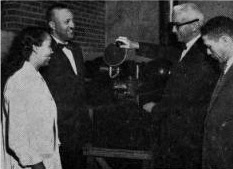Credit: Cell Reports Physical Science (2024). DOI: 10.1016/j.xcrp.2024.101783
Topics: Biochemistry, Chemistry, Polymer Science, Polymers
Scientists at King's College London have developed an innovative solution for recycling single-use bioplastics commonly used in disposable items such as coffee cups and food containers.
The novel method of chemical recycling, published in Cell Reports Physical Science, uses enzymes typically found in biological laundry detergents to "depolymerize"—or break down—landfill-bound bioplastics. Rapidly converting the items into soluble fragments within just 24 hours, the process achieves full degradation of the bioplastic polylactic acid (PLA). The approach is 84 times faster than the 12-week-long industrial composting process used for recycling bioplastic materials.
This discovery offers a widespread recycling solution for single-use PLA plastics, as the team of chemists at King's found that in a further 24 hours at a temperature of 90°C, the bioplastics break down into their chemical building blocks. Once converted into monomers—single molecules—the materials can be turned into equally high-quality plastic for multiple reuse.
The problem with 'green' plastics
Current rates of plastic production outstrip our ability to dispose of it sustainably. According to Environmental Action, it is estimated that in 2023 alone, more than 68 million tons of plastic globally ended up in natural environments due to the imbalance between the huge volumes of plastics produced and our current capacity to manage and recycle plastic at the end of its life. A recent OECD report predicted that the amount of plastic waste produced worldwide will almost triple by 2060, with around half ending up in landfills and less than a fifth recycled.
An enzyme used in laundry detergent can recycle single-use plastics within 24 hours, King's College London.
